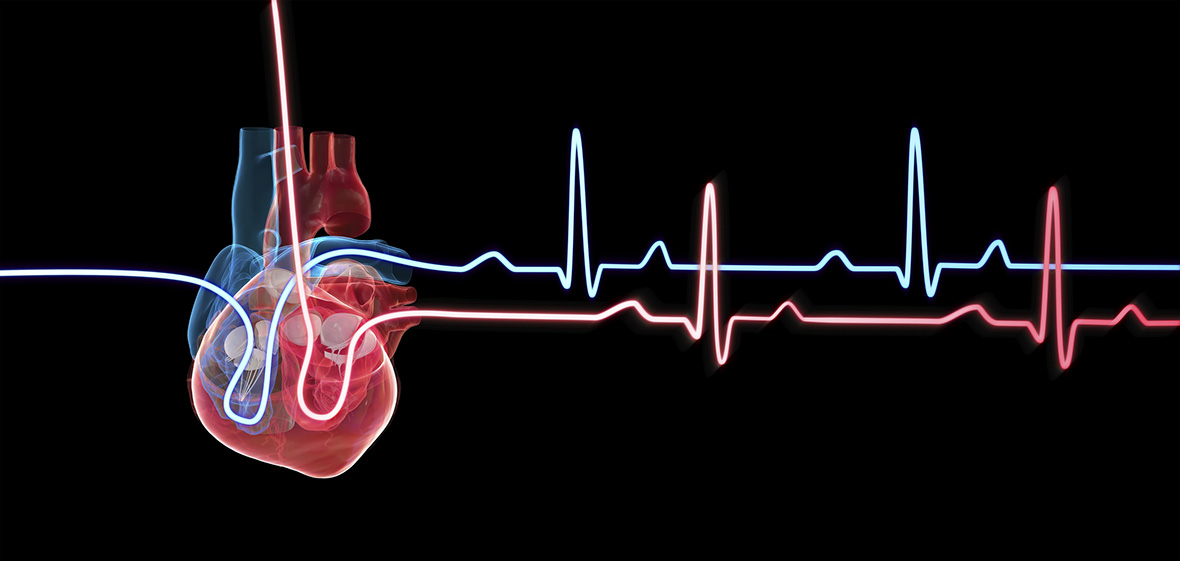
Picture a football team trying to get the ball down the field, or a baseball player at bat. If a hard-hit or hard-thrown ball hits the middle of the sternum (breastbone) at the right time of the cardiac cycle (the peak of the T-wave, when the heart is recovering from its beat electrically), it can cause the affected person to go into an irregular heart rhythm. This irregular heart rhythm is commotio cordis, and it can be fatal.
Commotio cordis is a Latin term for “commotion of the heart.” The rhythm disturbance in the heart is basically a commotion – the rhythm becomes chaotic. This chaotic rhythm is called ventricular fibrillation.
Commotio cordis has been occurring in people for centuries. However, over the past few decades, it has become more understood as the reason that if a person is hit at the right time and in the right place, it can result in enough discharge to actually change the rhythm of the heart.
While commotio cordis is rare due to the timing in which it would have to happen, it is not impossible. For example, in football, such as with the case of Damar Hamlin, who was diagnosed with commotio cordis, it is possible for players to experience commotio cordis after tackling other players, or being tackled, due to the strong impact of the hit.
The average age a person is most likely to experience commotio cordis is 15 years old. There is a commotio cordis registry that has an average of 10 cases added every year. The likelihood of commotio cordis occurring in people older than 20 years of age is low, but like in Hamlin’s case, it can occur in people older than 20 years of age also.
The reason commotio cordis is more likely to occur in younger people is because their sternums are not as thick, so there is less protection in that area of the chest. As people get older, they develop more tissue in that area, so it makes it harder for trauma to occur and result in an abnormal electrical rhythm.
The Importance of Performing CPR and Using an AED
When commotio cordis occurs in a person, they will collapse. Immediate cardiopulmonary resuscitation (CPR) is essential to try to save the person’s life. If CPR does not occur, the brain will not get the blood flow it needs, and the person will die. Recovery from commotio cordis is dependent on how much circulation gets to the brain and other vital organs.
CPR procedures are frequently evaluated by examining data to see if any changes are needed to how it is performed, to make CPR more effective. There are two types of CPR that are commonly used: standard CPR, which involves a repetitive cycle of 30 chest compressions followed by two rescue breaths, and hands-only or compression-only (or hands-only) CPR, which involves continuous chest compressions.
Hands-only CPR has actually shown to be more effective at getting appropriate blood circulation to resume in the body. It is important to start CPR as early as possible for it to have the highest likelihood of being effective and helping the person have a total recovery.
If CPR begins after the person has been down for three minutes, it will be much harder for them to recover. Anoxic brain injury can occur if there is not enough oxygen going to the brain. This can cause the patient to not be able to move, speak, understand or survive, depending on the parts of the brain that are injured from lack of oxygen.
Also, it is important to use an automated external defibrillator (AED) if you have access to one or have a health care professional use one they have on hand to shock the person’s heart back in rhythm. This will help restore the heart’s electrical activity.
Since commotio cordis is most likely to occur in athletes, their physical fitness could help them be more likely to recover fully. However, people with commotio cordis may need a defibrillator implanted to keep their heart rhythm regulated, and this prevents some athletes from going back to competition.
There is a huge ethnic disparity between commotio cordis survival among white people compared to Black people: Black people are less likely to survive the condition than white people, due to the disparity in knowledge of CPR and knowing how to use an AED. As a result, it is important for all people to have the opportunity to learn how to perform CPR and use an AED.
Chest contact, in sports or otherwise, can be dangerous because there is a chance it can cause commotio cordis. We all need to know CPR to be able to save someone’s life and know where to access an AED.
How UofL Health is Committed to Improving Community’s Cardiovascular Health
UofL Health offers CPR training throughout the year and is working with high schools in the West End of Louisville. UofL Health is working toward a goal of getting everyone in Louisville to understand CPR and perform it when it is necessary.
Also, athletes and others can be screened for kinds of heart disease that can lead to serious rhythm disturbances. UofL Health Physicians – Cardiology has a Preventative Cardiology Program that is focused on preventing heart and vascular disease before a patient has a cardiac event and preventing existing cardiovascular disease from getting worse. Call 502-588-7010 today to schedule a consultation.









